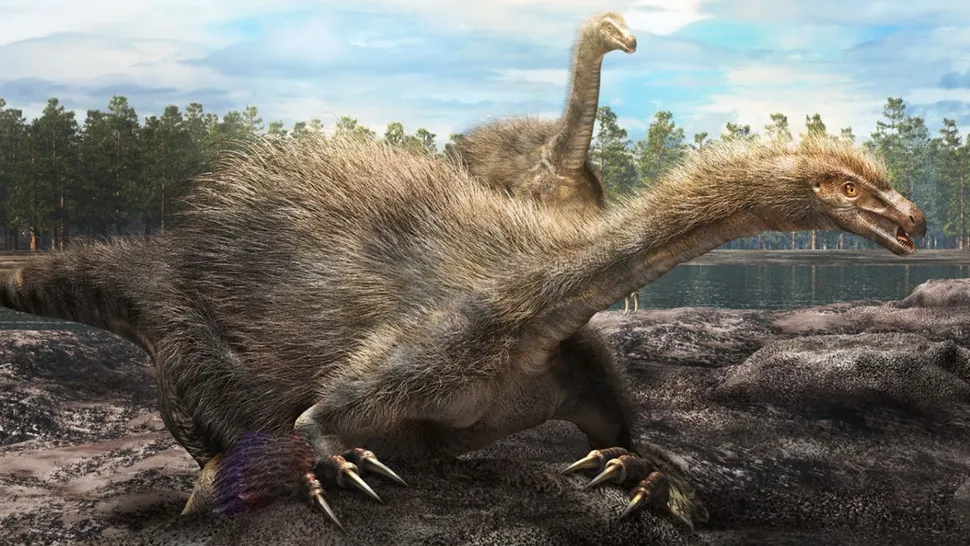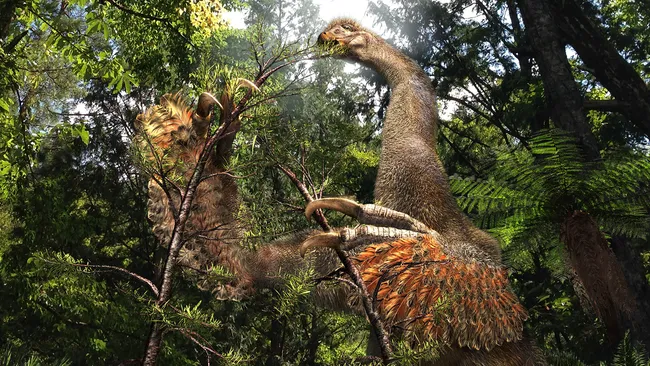A new species of dinosaur named Duonychus tsogtbaatari has been discovered by scientists, and unlike other therizinosaurs, this species has only two clawed fingers instead of three.
Newly Discovered Dinosaur in Mongolia Had Strange Claws
Paleontologists have unearthed a new species of dinosaur in Mongolia’s Gobi Desert that challenges what scientists thought they knew about therizinosaurs. Unlike its three-fingered relatives, this newly identified species, Duonychus tsogtbaatari, had only two fingers, making it a highly unusual member of its group.
A One-of-a-Kind Therizinosaur
Therizinosaurs were large, plant-eating, two-legged dinosaurs known for their massive, sickle-shaped claws. They lived during the Late Cretaceous Period (100–66 million years ago) across what is now Asia and North America. While they belonged to the theropod group—home to famous carnivores like Tyrannosaurus rex—they evolved into herbivores.
The defining feature of therizinosaurs has always been their three-fingered hands, each tipped with large claws. However, D. tsogtbaatari breaks this pattern, possessing just two fingers. This rare trait inspired its name—Duonychus, meaning “two digits,” while tsogtbaatari honors Mongolian paleontologist Khishigjav Tsogtbaatar.

Discovery and Significance
The fossil was found in southern Mongolia’s Bayanshiree Formation during the construction of a water pipeline. Remarkably, the specimen had well-preserved hands, arms, spine, and hips, with an intact keratinous sheath covering one of its claws. This is the first time such a sheath has been found in a medium- to large-sized theropod, providing key insights into claw structure.

Why Did It Lose a Finger?
Lead researcher Yoshitsugu Kobayashi of Hokkaido University believes that D. tsogtbaatari may have evolved to lose its third finger for a purpose. Unlike predatory theropods, which used their hands for hunting, this species likely relied on its claws for:
✔ Grasping vegetation – Similar to how chameleons use their feet today
✔ A “hook-and-pull” motion – Helping it gather food more efficiently
✔ Potential defense, courtship, or play – Indicating possible social behaviors
This marks the fifth time a theropod group evolved to lose a finger, suggesting an important evolutionary shift.
Changing Our Understanding of Dinosaurs
Co-author Darla Zelenitsky of the University of Calgary notes that this discovery reshapes what we know about therizinosaurs. While they were already considered some of the most unusual dinosaurs, D. tsogtbaatari takes that to another level.
“To find a specimen with only two fingers was surprising,” Zelenitsky said. “This was so out of the ordinary for this group of dinosaurs.”
With further fossil discoveries, scientists hope to learn even more about how D. tsogtbaatari lived and why it developed its unique anatomy.
